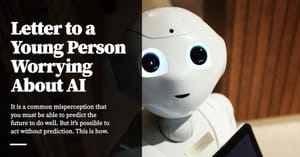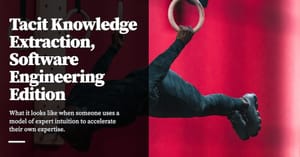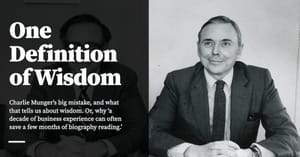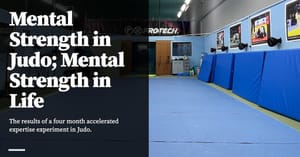One of the things I’ve long suspected is true, but wanted to verify for myself, is this idea of ‘reading quickly is reading a lot’.
The basic principle is easy to grok: once you’ve read enough books about a single topic, it becomes trivially easy to read a new book on that topic. This experience should be familiar to computer programmers: for every n programming language you know, the n+1 programming language you adopt becomes easier to learn — because you can map most features in that new programming language to some feature in some language you already know.
(My polyglot friends say this is true of several Germanic languages as well, where each Germanic language makes it easier to learn the next, though I’d have to take their word for it.)
Two weeks ago, I put this suspicion to the test. Over the past decade I’d read or skimmed most of the major books on competitive advantage. This included:
- Michael Porter’s Competitive Strategy (skimmed)
- Clayton Christensen’s The Innovator’s Dilemma (read)
- Richard Rumelt’s Good Strategy Bad Strategy (read)
- and Hamilton Helmer’s 7 Powers (read)
My working theory was that I’d read enough about competitive advantage to be able to finish a book — Bruce Greenwald and Judd Kahn’s Competition Demystified — in a single day.
Two Sundays ago, I did exactly this.
The experience was fascinating. I found myself flying through the pages, skimming whole sections, writing some off with “ok, this is covered ground, I know about this, let’s move on.” I finished the book in four hours. The experience quickly became about identifying the ideas that were novel in the book, that hadn’t been covered by the other authors I’d already read.
In other words, reading this way becomes about the delta — the contribution to existing knowledge that the book represents. You ignore everything else that you already have in your head.
Of course, I’m not the first person to have discovered this. Anyone who has spent a large amount of time reading is likely to have stumbled upon the same experience — but only if they’ve read enough about a single topic. Before I started on my 52-books-a-year goal, I spent much of my (admittedly limited) reading time spelunking in random pop-sci or self-help books. This was no way to build a critical density around a single topic — and it explains why I’d never experienced a reading speedup quite like this before.
All of this is, if you think about it, rather remarkable: I’d been reading since I was roughly five years old, and I’d never known this form of reading to be possible. I feel a little embarrassed writing this. Of course this is doable. And yet an entire reading experience was opaque to me until perhaps two years ago.
What Other People Have Said
As it is with most such things, once you know this experience exists, you can’t help but see it everywhere.
Those of you who have read Mortimer Adler’s How To Read A Book would point out this is what Adler calls ‘syntopic’ reading, but Adler’s approach is for completeness of ideas, not speed.
Here’s Slava Akhmechet arguing something similar to Adler’s process, but from a different perspective:
A single book is a pinhole view of the world set up by the author. You have no input into its contents, and therefore cannot change the orientation of this view. But you do choose the books you select. That means you can stitch together multiple pinhole views into a unique lens to examine the world- one that no one else will have unless they use the same list of books to stitch together the same lens.
For example, you can look at the world through history of technology that became ubiquitous. Here is one possible list of books to stitch together this lens: The Victorian Internet, Empires of Light, The Wright Brothers, The Network, Hackers. Very few people in the world read all five of these books. Even within Silicon Valley, where everyone's living depends on creating new ubiquitous technology, your understanding of how technology becomes ubiquitous will be in the 95th percentile (and likely higher) if you read these five. You will now be armed with a unique instrument that few others possess, and assuming twenty books per year, it only took you three months to acquire.
Another example is to look at American history and the dynamics of failure by studying biographies of U.S. presidents who sought reelection and lost. There were ten: John Adams, John Quincy Adams, Martin Van Buren, Benjamin Harrison, William H. Taft, Herbert Hoover, Gerald Ford, Jimmy Carter, George H.W. Bush, and now Donald J. Trump. It may be difficult to stomach ten presidential biographies in a row, but it's doable to read five. That's enough to pick up a new lens. Another three months; another sophisticated instrument to examine the world at your disposal.
I settled on clusters of five and almost never read a single book in isolation. Less than five feel lacking; more than five gets repetitive. Every cluster has a goal of the form "studyXthroughY". Study American history through technological expansion, or study failure through one term presidents are just a few examples. I try to be creative and makeYunusual. For instance, everyone likes to read about presidents who are believed to be successful. A simple trick is to inverse it and read about unsuccessful ones instead. Or skip the presidents altogether, and read about vice presidents. It doesn't matter whatYis because you're trying to studyX, and it's more fun to makeYunusual.
Of course — the more overlap you have between the books, the faster each subsequent book becomes. (Akhmechet isn’t really arguing for this — he’s arguing about constructing a unique path through a topic, in service of creating an analytical lens).
I’m aware that his overall approach has some similarities to my Land and Expand Strategy for Reading — though my strategy is more focused on ‘easing’ into difficult topics. But I like Akhmechet’s presentation, and I agree with pretty much all of it.
The oldest articulation I’ve seen of ‘reading quickly is reading a lot’ is probably Tyler Cowen’s 2006 blog post How to read fast. He writes:
I am unfamiliar with speed reading techniques, so I cannot evaluate them.
The best way to read quickly is to read lots. And lots. And to have started a long time ago. Then maybe you know what is coming in the current book. Reading quickly is often, in a margin-relevant way, close to not reading much at all.
Note that when you add up the time costs of reading lots, quick readers don’t consume information as efficiently as you might think. They’ve chosen a path with high upfront costs and low marginal costs. "It took me 44 years to read this book" is not a bad answer to many questions about reading speed.
Cowen ends the post with:
Blogging hasn’t hurt my writing, it has helped by non-fiction reading, but I read fewer novels. That is the biggest intellectual opportunity cost of MR, though for the last month I’ve made a concerted effort to read more fiction. But it is not like the old days when I would set aside two months to work through The Inferno, Aeneid, and the like, with multiple secondary sources and multiple translations at hand. I no longer have the time or the mood, and I miss this.
For what it’s worth, I’ve never spent two months working through The Aeneid with ‘multiple secondary sources and multiple translations at hand’. The most fiction I can manage right now is guilty-pleasure pandemic binging on science fiction or some ridiculous thing like the Crazy Rich Asians series.
Cowen’s post implies that there’s another category of reading experience that’s been opaque to me. Once this whole pandemic craziness is over, I can’t wait to find out what that’s like.
Get the Action Sheet
Download the actionable summary for Reading Quickly is Reading a Lot here →
Originally published , last updated .
This article is part of the Expertise Acceleration topic cluster. Read more from this topic here→





